 Operation and Maintenance
Operation and Maintenance
 Docker
Docker
 The most systematic mastery of Docker core technology (summary sharing)
The most systematic mastery of Docker core technology (summary sharing)
The most systematic mastery of Docker core technology (summary sharing)
This article brings you some related questions about container operation of docker core technology, detailed explanation of Dockerfile, etc. I hope it will be helpful to you.

1. Docker
1. Introduction
- Based on the Cgroup, Namespace, and Union FS technologies of the Linux kernel, Encapsulating and isolating processes is a virtual technology at the operating system level. Since the isolated process is independent of the host and other isolated processes, it is called a container.
- The initial implementation was based on LXC. LXC will be removed from 0.7 onwards. Switch to the self-developed Libcontainer. Starting from 1.11, it has further evolved to use runC and Containerd
- Docker has further encapsulated it on the basis of the container, from file system, network interconnection to process isolation, etc. , which greatly simplifies the creation and maintenance of containers, making Docker technology lighter and faster than virtual machine technology
2. Docker advantages
- Use it more efficiently System resources
- Faster startup time
- Consistent operating environment
- Continuous delivery and deployment
- Easier migration
- More Easily maintain and expand
3. Comparison between Docker and virtual machines
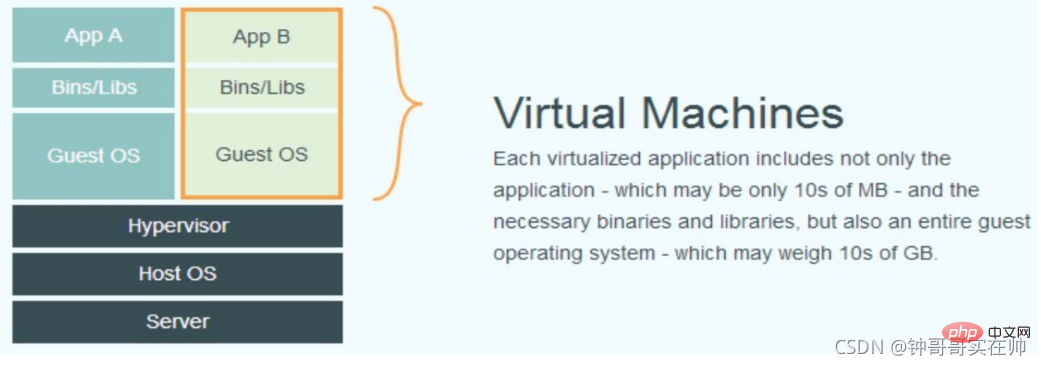


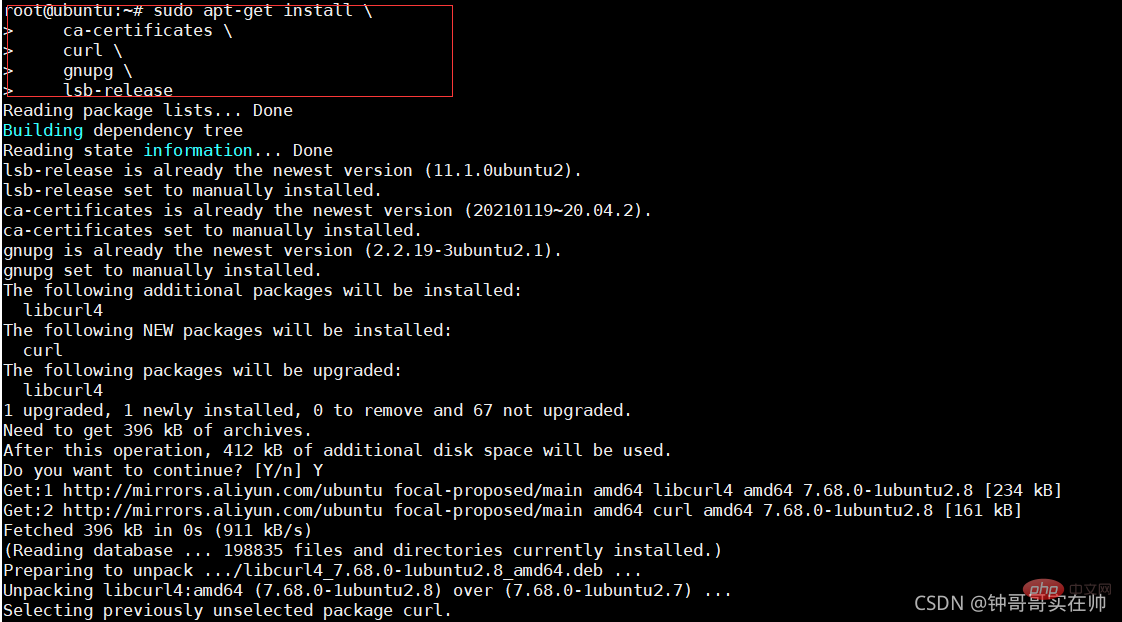


 ##3. Container operation
##3. Container operation
- Start:
- docker run:
-It interaction
-d Running
--P port mapping
--V disk hanging
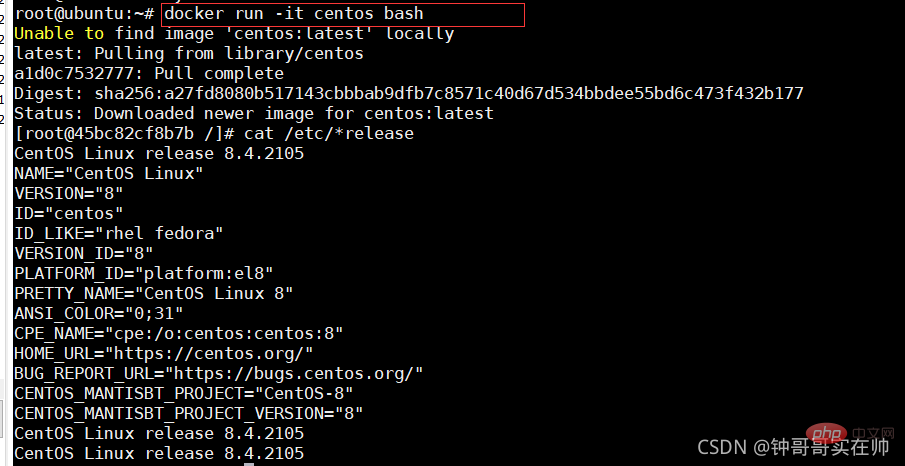
- Start the terminated container

- Stop container

- View container process

- ##View container details
-
docker inspect
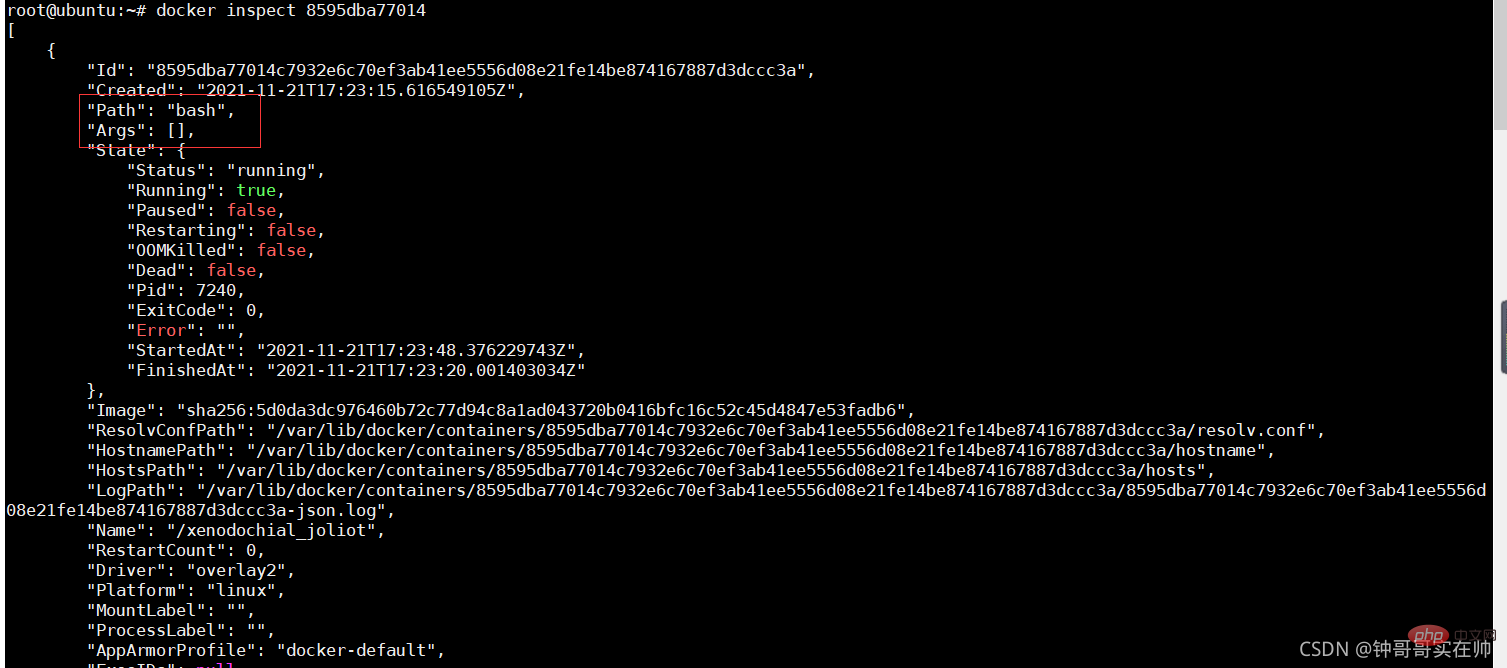
docker cp file1
:/file_to_path
 #docker exits the container without closing the container: ctrl q p
#docker exits the container without closing the container: ctrl q p
docker exits the container and closes the container: exit
##Query all docker images
docker images

- Docker hub: https://hub.docker.com
Create a private image warehouse: docker run -d -p 5000:5000 registry
Four. Dockerfile Detailed explanation
- From: Specify the basic mirror image, must be the first instructions
- : Format:
From & LT; Image & GT;@& LT; Digest & GT;
## Example:## Ubuntu
AINTAINER: Maintenance Information# This #Format: MAINTAINER
RUN: Command executed when building the image
Format: Shell execution: RUNRUN apt-get update && apt The two commands -get install are always connected with &&, otherwise the apt-get update build layer will be cached, which will cause the new package to fail to be installed
ADD: Add local files to the container, Types such as tar will automatically decompress and you can access network resources, similar to wget
Format: ADDCOPY: The function is similar to ADD, but it does not decompress files and cannot access network resources
Use multi-stage in Dockerfile: multi-stage in Dockerfile (multi-stage build) - sparkdev - Blog Park Format: COPYCMD: Called after the container is built, that is, it is called only when the container starts
Format: CMD ["executable","param1","param2"] (Execute executable file, priority) CMD ["param1","param2"] ( If ENTRYPOINT is set, call ENTRYPOINT directly to add parameters)
CMD command param1 param2 (execute shell internal command)
ENTRTPOINT: Configure the container to make it executable.
Format: ENTRYPOINT ["executable", "param1", "param2"] (executable file, priority) ENTRYPOINT command param1 param2 (shell internal command)
LABAL: Used to add source data to the image
Format: LABELENV: Set environment variables
Format: ENVEXPOSE: Specify external interaction Port
Format: EXPOSEVOLUME: Used to specify the persistence directory
Format: VOLUME [USER: Specify the run The user name or UID of the container, and subsequent RUN will also use the specified user.
Format: USER user
USER user:group
USER uid
USER uid:gid
USER user:gid
USER uid:group
USER www
ARG: Used to specify variables passed to the build runtime
Format: ARG < name>[=
Example:
ARG build_user=ribbon
##
5. Detailed explanation of Linux NameSpace
Detailed explanation of NamesSpace:
Linux NameSpace_Frank_Abagnale's Blog-CSDN Blog This article provides a more detailed introduction. You can refer to this article
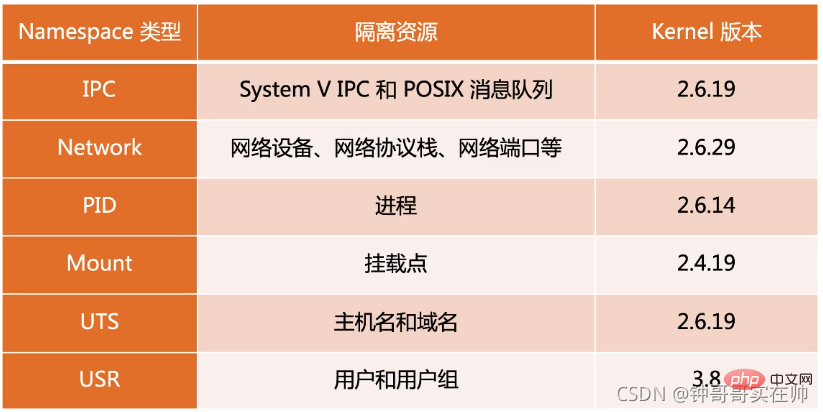
Common operations of NameSpace
- to view the namespace of the current system:
lsns -t

- View the namespace of a process:
ls -la /proc/

- View a namespace running command
nsenter -t
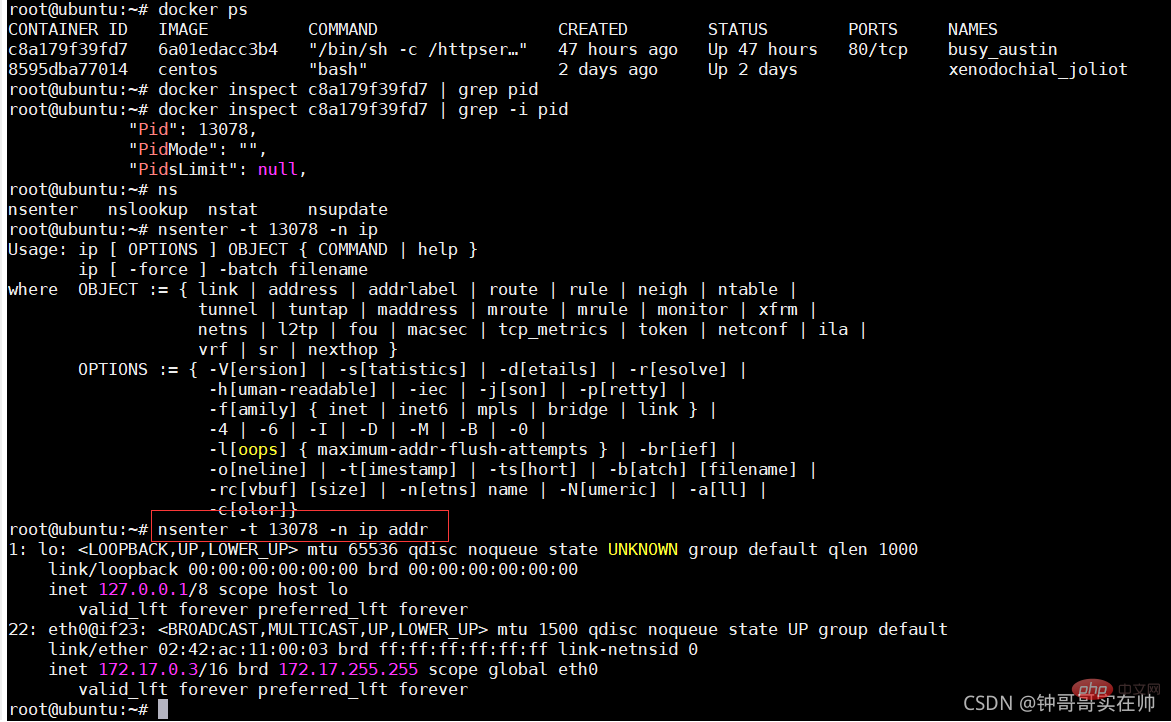
6. Detailed explanation of Linux Cgroups
Detailed explanation of Cgroups
Container Core: cgroups - Brief Book You can refer to this article to learn more
Simulate Cgroups to control CPU resources
Pass Simulate to better familiarize yourself with the effect of Cgroups controlling resources. First create the cpudemo folder

Execute top and you can see that busyloop takes up two CPU resources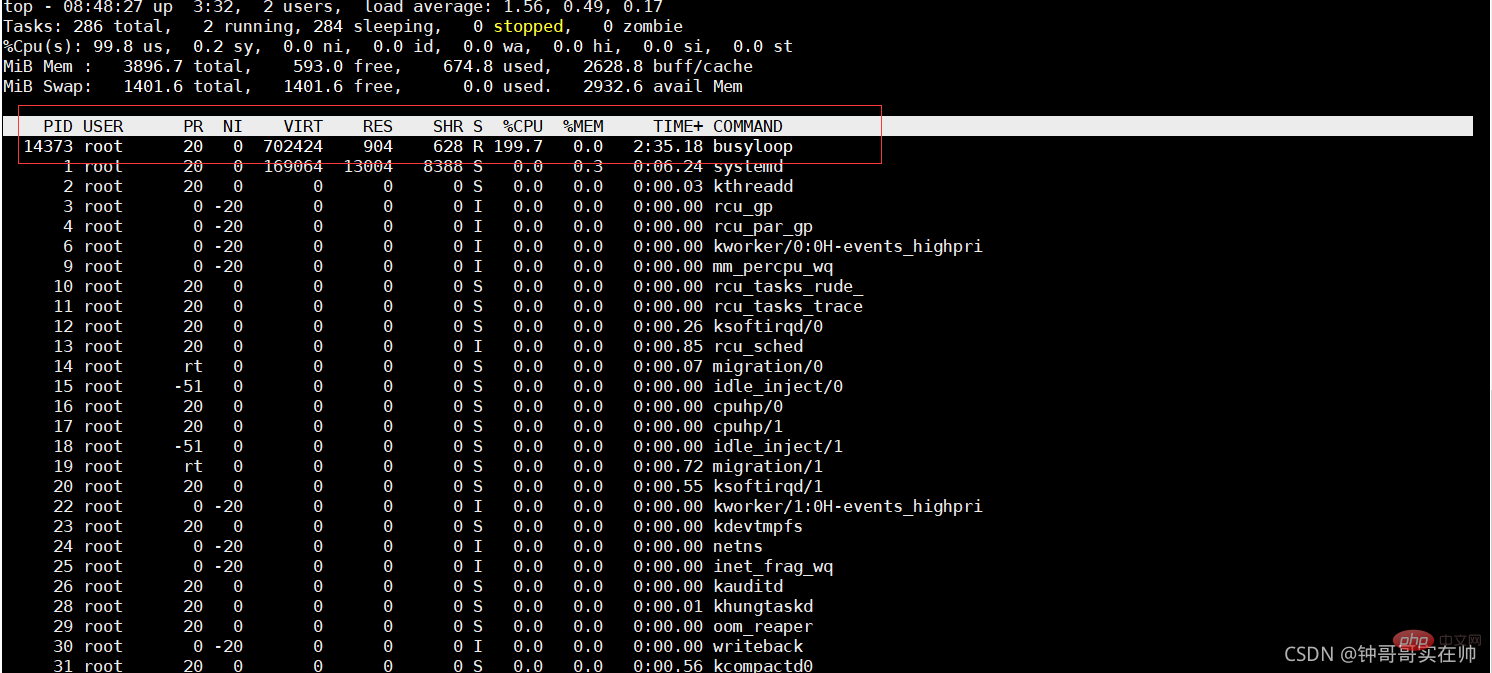
Add the process to the cgroup process configuration group

Set cpuquota

You can see that success will occupy 200% The CPU resources are reduced to 1%
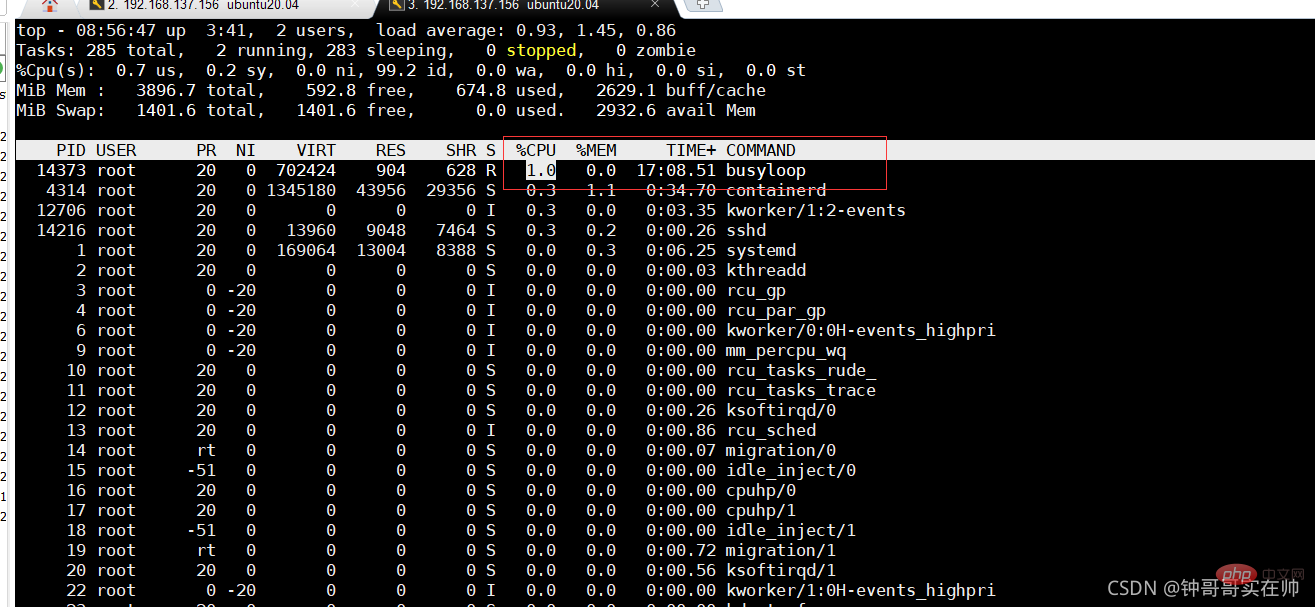
Simulating Cgroups exceeding the limit memory resources and being killed by OOM
/ Create the memorydemo folder in the sys/fs/cgroup/memory directory

Run the memory-consuming program and use watch to query the memory usage


Configure the process into the cgroups configuration group 
Set the maximum memory size

Waiting for the program Killed by OOM, dmesg can see the kill information


Note: To delete self-created cgroup folders, you need to use cgroup-tools
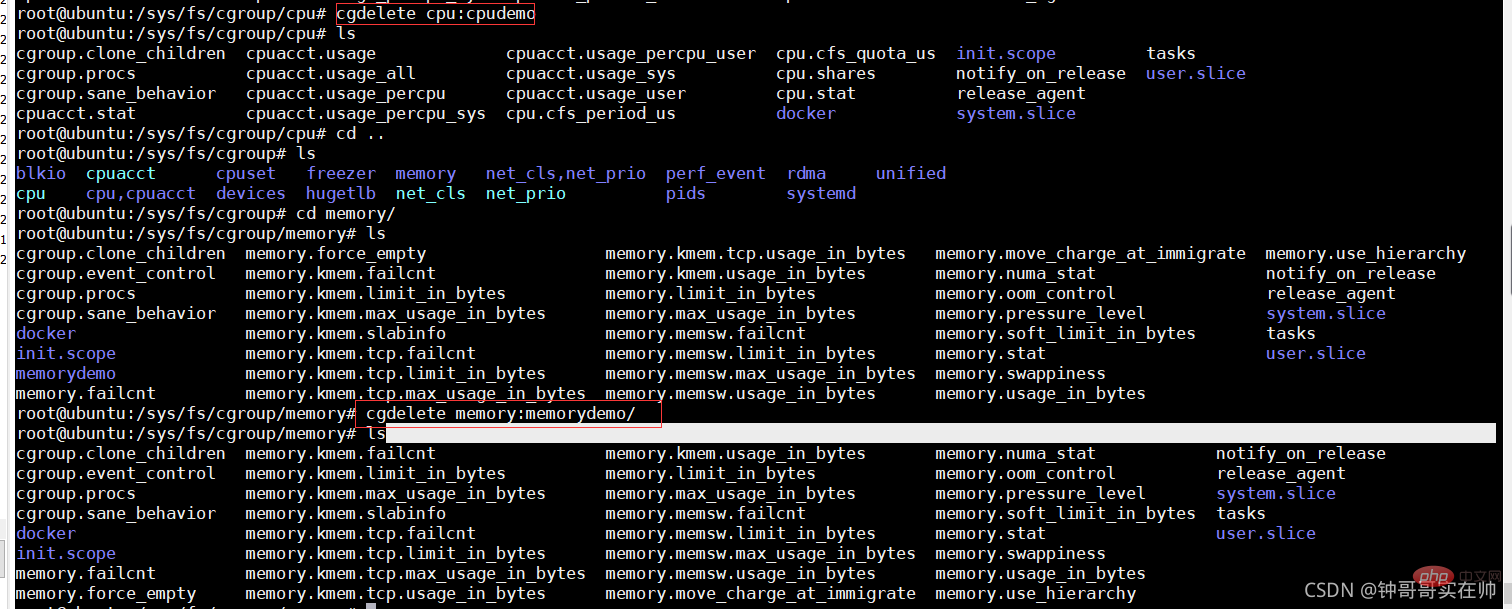
7. Union FS
The technologies used by Docker are all derived from Linux technologies and are not There is no innovation, and the innovation of Docker is the file system.
1. Concept:
- File system that mounts different directories under the same virtual file system
- Supports setting readonly, readwrite and without for each member directory -able permissions
- File system layering, the directory with readonly permissions can be logically modified. The modifications here are incremental and do not affect the readonly part
- Usual Union FS uses: Multiple disks are mounted to the same directory, and the other is to combine the readonly part and the writeable directory
2. Illustration of Union FS
In the design of the Docker image, The concept of layer is introduced, that is to say, every step of the user's image creation operation will generate a layer, that is, an incremental rootfs (a directory), so that the containers where application A and application B are located jointly reference the same The ubuntu operating system layer and the Golang environment layer (as read-only layers) each have their own application layer and writable layer. When starting the container, mount the relevant layers to a directory through UnionFS as the root file system of the container.
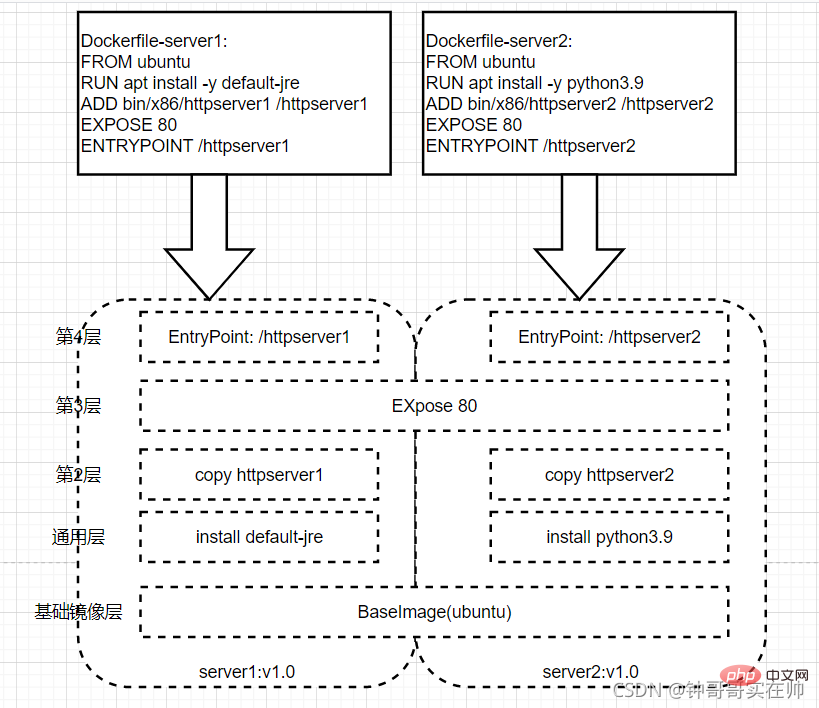
3. Container storage driver

4. Simulate Union FS to better understand the effect

Since the current version of docker uses the overlayFS storage driver, we use the overlay mounting method to conduct experiments. Overlayfs passes through three directories: lower Directory, upper directory, and work directory are implemented. There can be multiple lower directories. The work directory is the basic working directory. After mounting, the content will be cleared and its content will not be visible to the user during use. Finally, the joint mounting is completed. The unified view presented to the user is called the merged directory.

Execute the following command:
mkdir upper lower merged work
echo "lower" > lower/in_lower.txt
echo "from lower" > lower/in_both.txt
echo "from upper" > upper/in_both.txt
echo "upper" > upper/in_upper.txt
path=$(pwd)
mount -t overlay overlay -o lowerdir=${path}/lower,upperdir=${path}/upper,workdir=${path}/work ${path}/merged
## You can see that the overlay storage driver file is mounted using Effect. After the experiment is completed, you need to restore the environment after umounting the merged directory, and then deleting the four directories. If you delete the others first, rm: cannot remove 'merged/': Device or resource busy may appear, resulting in the merged directory not being deleted. 

- Query the built-in docker Network mode

- docker run Select the network mode to run

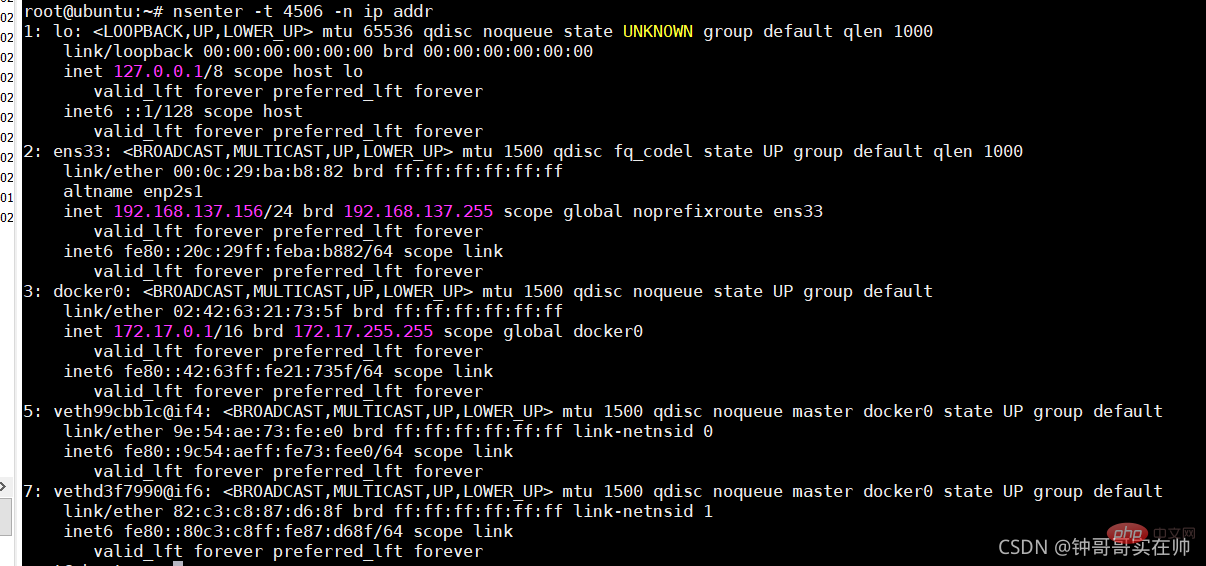
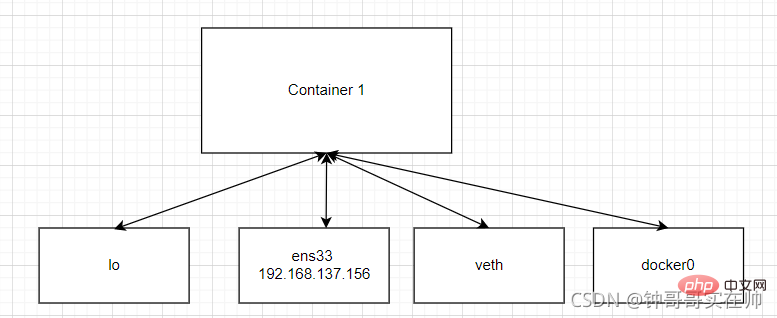 # 2) none mode: use --net=none specified. The network configuration needs to be configured by yourself
# 2) none mode: use --net=none specified. The network configuration needs to be configured by yourself

 3) Bridge mode: Use --net=bridge to specify, the default setting.
3) Bridge mode: Use --net=bridge to specify, the default setting.
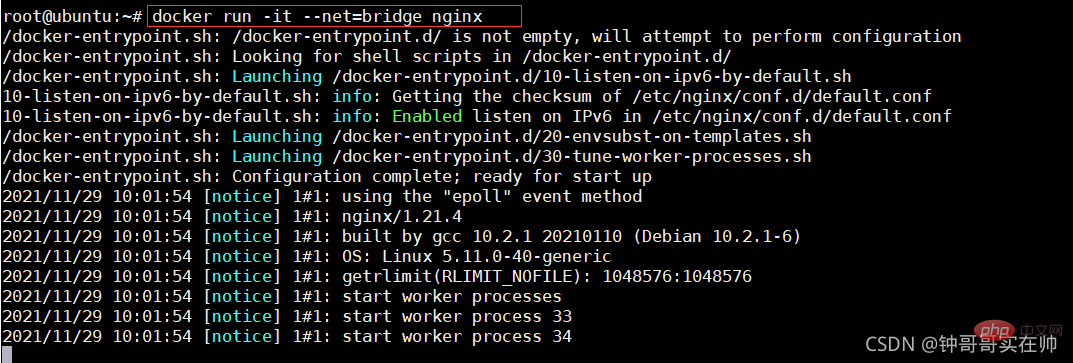
 docker network logic diagram bridge and NAT
docker network logic diagram bridge and NAT
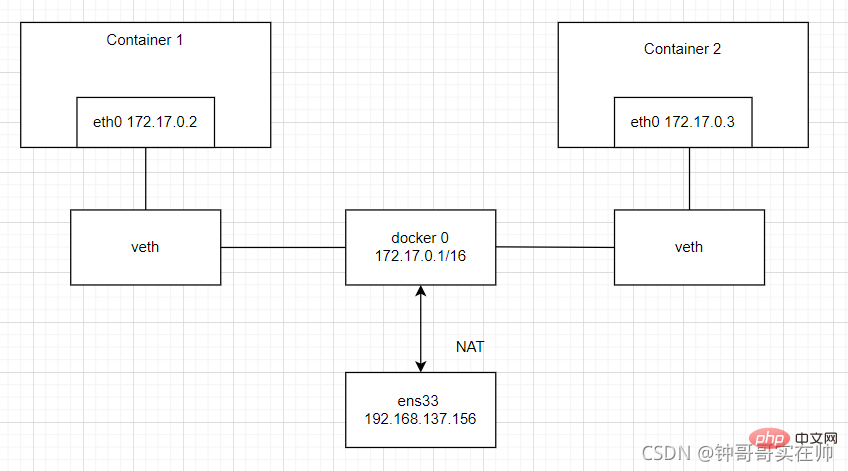
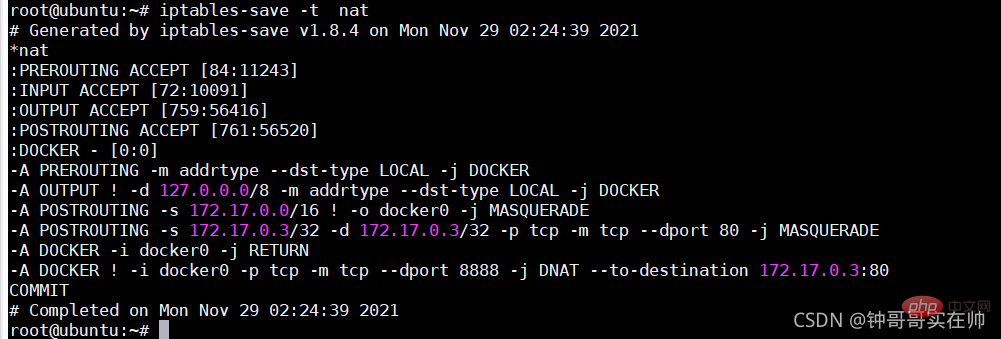
4) Container mode: Use --net=container:NAME_or_ID to specify. Using the network configuration of other containers
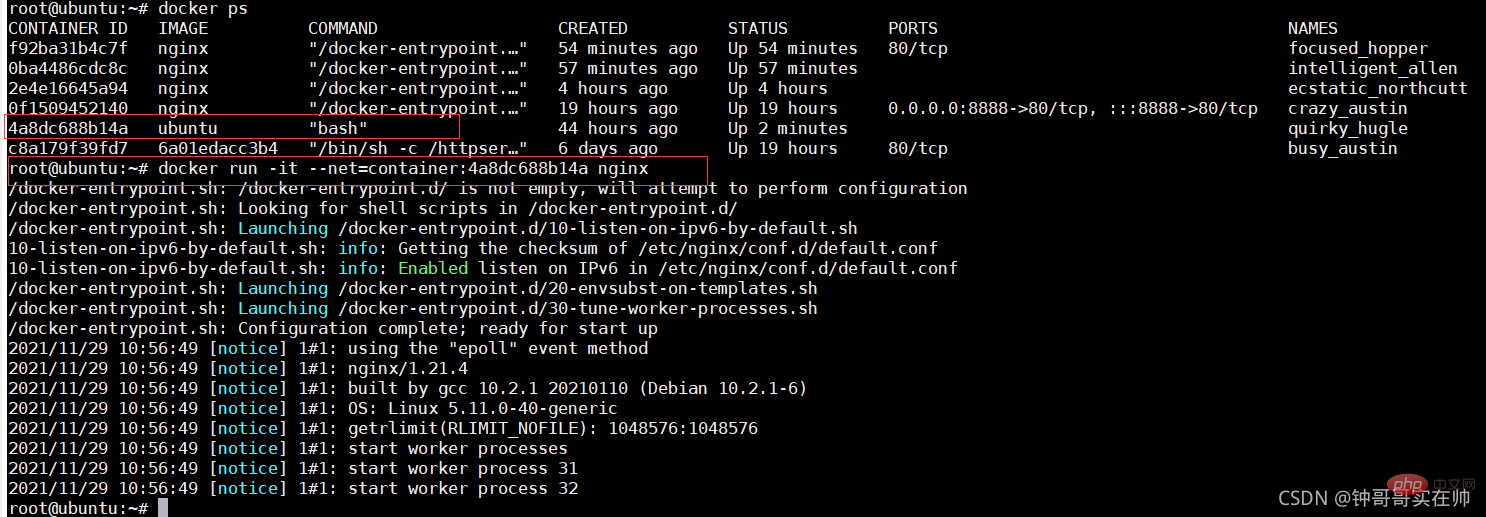

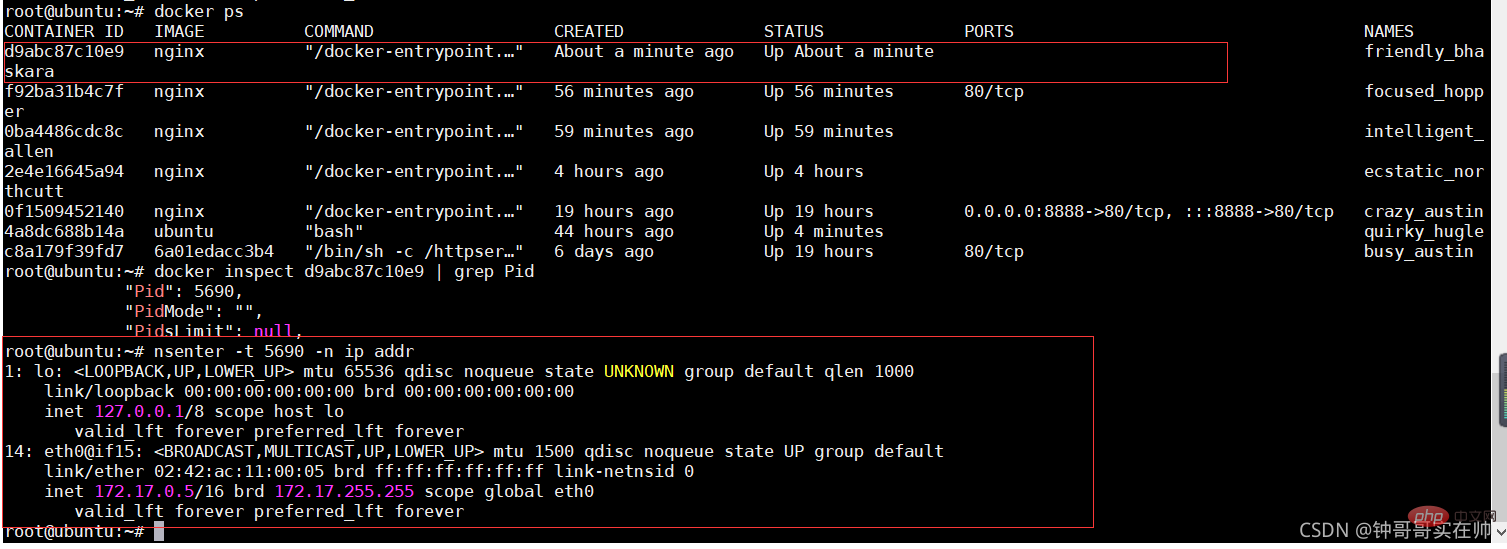
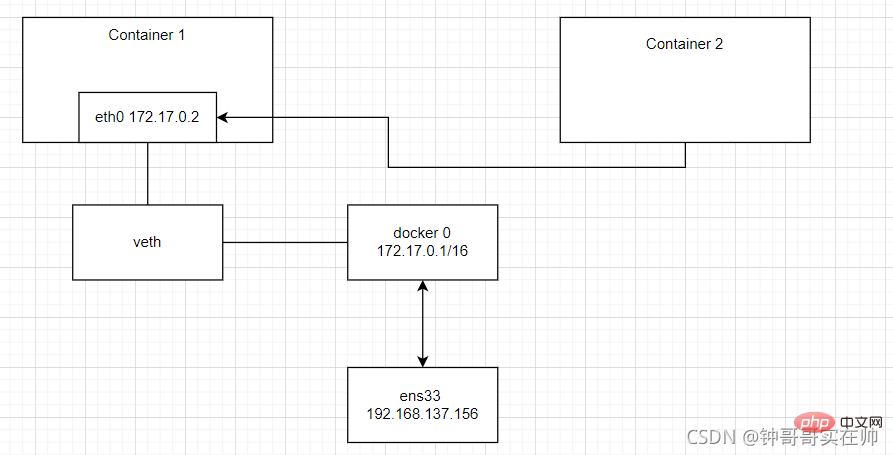
- Create --net=none nginx

- Create network namespace

- ## Create network namespace link


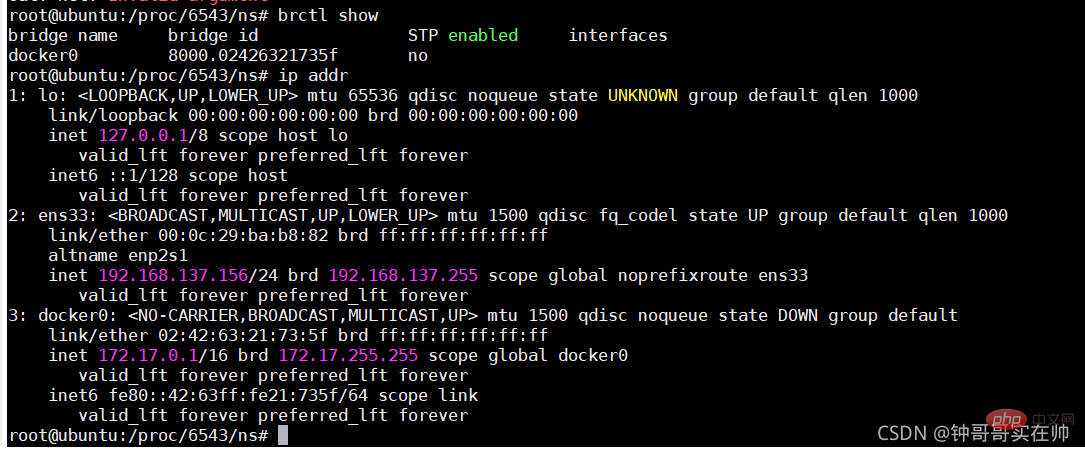


- Generate eth0 network device in nginx docker
Configure ip gateway for eth0 

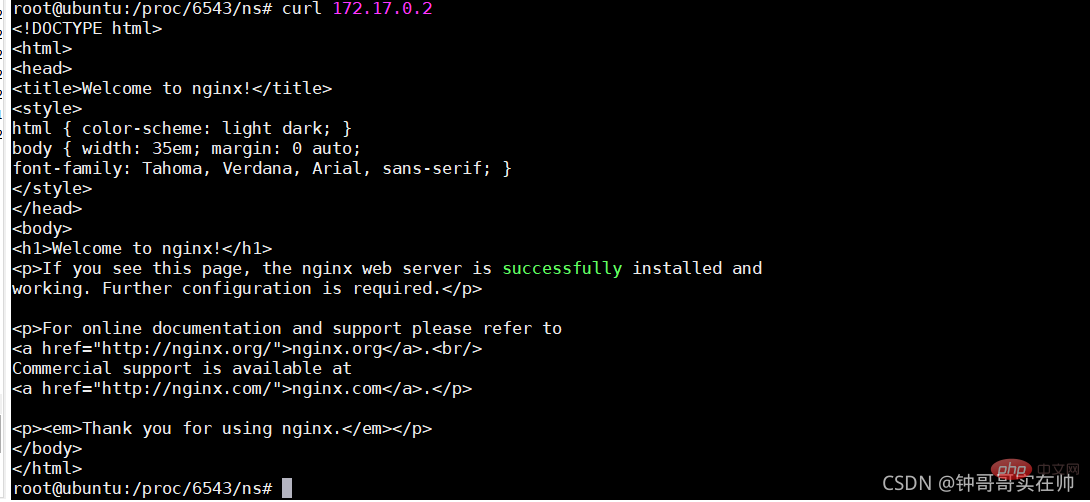



Recommended learning: "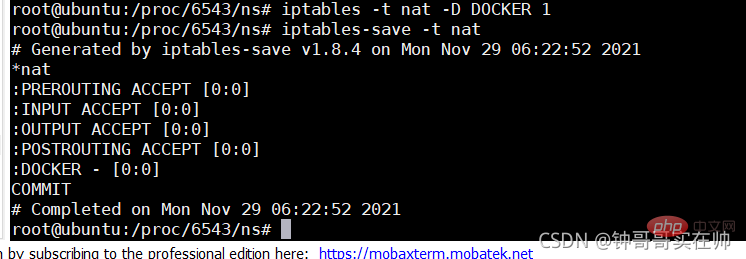 docker video tutorial
docker video tutorial
The above is the detailed content of The most systematic mastery of Docker core technology (summary sharing). For more information, please follow other related articles on the PHP Chinese website!

Hot AI Tools

Undresser.AI Undress
AI-powered app for creating realistic nude photos

AI Clothes Remover
Online AI tool for removing clothes from photos.

Undress AI Tool
Undress images for free

Clothoff.io
AI clothes remover

Video Face Swap
Swap faces in any video effortlessly with our completely free AI face swap tool!

Hot Article

Hot Tools

Notepad++7.3.1
Easy-to-use and free code editor

SublimeText3 Chinese version
Chinese version, very easy to use

Zend Studio 13.0.1
Powerful PHP integrated development environment

Dreamweaver CS6
Visual web development tools

SublimeText3 Mac version
God-level code editing software (SublimeText3)

Hot Topics
 1663
1663
 14
14
 1420
1420
 52
52
 1313
1313
 25
25
 1266
1266
 29
29
 1239
1239
 24
24
 How to exit the container by docker
Apr 15, 2025 pm 12:15 PM
How to exit the container by docker
Apr 15, 2025 pm 12:15 PM
Four ways to exit Docker container: Use Ctrl D in the container terminal Enter exit command in the container terminal Use docker stop <container_name> Command Use docker kill <container_name> command in the host terminal (force exit)
 How to copy files in docker to outside
Apr 15, 2025 pm 12:12 PM
How to copy files in docker to outside
Apr 15, 2025 pm 12:12 PM
Methods for copying files to external hosts in Docker: Use the docker cp command: Execute docker cp [Options] <Container Path> <Host Path>. Using data volumes: Create a directory on the host, and use the -v parameter to mount the directory into the container when creating the container to achieve bidirectional file synchronization.
 How to start containers by docker
Apr 15, 2025 pm 12:27 PM
How to start containers by docker
Apr 15, 2025 pm 12:27 PM
Docker container startup steps: Pull the container image: Run "docker pull [mirror name]". Create a container: Use "docker create [options] [mirror name] [commands and parameters]". Start the container: Execute "docker start [Container name or ID]". Check container status: Verify that the container is running with "docker ps".
 How to restart docker
Apr 15, 2025 pm 12:06 PM
How to restart docker
Apr 15, 2025 pm 12:06 PM
How to restart the Docker container: get the container ID (docker ps); stop the container (docker stop <container_id>); start the container (docker start <container_id>); verify that the restart is successful (docker ps). Other methods: Docker Compose (docker-compose restart) or Docker API (see Docker documentation).
 How to check the name of the docker container
Apr 15, 2025 pm 12:21 PM
How to check the name of the docker container
Apr 15, 2025 pm 12:21 PM
You can query the Docker container name by following the steps: List all containers (docker ps). Filter the container list (using the grep command). Gets the container name (located in the "NAMES" column).
 How to start mysql by docker
Apr 15, 2025 pm 12:09 PM
How to start mysql by docker
Apr 15, 2025 pm 12:09 PM
The process of starting MySQL in Docker consists of the following steps: Pull the MySQL image to create and start the container, set the root user password, and map the port verification connection Create the database and the user grants all permissions to the database
 How to view logs from docker
Apr 15, 2025 pm 12:24 PM
How to view logs from docker
Apr 15, 2025 pm 12:24 PM
The methods to view Docker logs include: using the docker logs command, for example: docker logs CONTAINER_NAME Use the docker exec command to run /bin/sh and view the log file, for example: docker exec -it CONTAINER_NAME /bin/sh ; cat /var/log/CONTAINER_NAME.log Use the docker-compose logs command of Docker Compose, for example: docker-compose -f docker-com
 How to create containers for docker
Apr 15, 2025 pm 12:18 PM
How to create containers for docker
Apr 15, 2025 pm 12:18 PM
Create a container in Docker: 1. Pull the image: docker pull [mirror name] 2. Create a container: docker run [Options] [mirror name] [Command] 3. Start the container: docker start [Container name]




